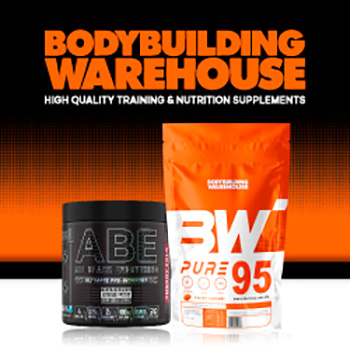
Fitness Challenges For beginners
Week 1: Foundation Building
If you’re looking into fitness challenges for beginners, your first week focuses on establishing baseline metrics and building aerobic efficiency. Begin with a performance assessment: a 12 minute Cooper test or 5K time trial to establish your current capacity. Record your results meticulously these numbers will become your reference point for measuring progress.
Days 2-3 introduce Zone 2 training (60-70% max heart rate) for 30-45 minutes. This focuses on maintaining steady effort rather than covering specific distances. It builds mitochondrial density, your cellular powerhouses that determine aerobic capacity. Day 4 incorporates your first tempo session at 75-80% max heart rate. This lasts for 20 minutes, teaching your body to process lactate more efficiently.
Days 5-6 alternate between strength training focusing on compound movements (squats, deadlifts, rows). Additionally, include cross training activities that complement your primary endurance sport. Day 7 is dedicated to active recovery with light movement that promotes blood flow without creating additional fatigue. This structured approach establishes the physiological foundation necessary for more intense work to come.
Week 2-3: Progressive Challenges
Weeks 2-3 strategically increase both volume and intensity while maintaining the critical balance between stress and recovery. Your Zone 2 sessions extend to 45-60 minutes, while tempo work increases to 2 × 15 minutes with 5 minutes recovery between efforts. This progression challenges your lactate threshold without overwhelming recovery capacity.
Introduce high intensity interval training once weekly during this phase. Perform 6-8 repetitions of 3 minute efforts at 85-90% max heart rate with equal recovery periods. These carefully calibrated intervals improve your VO2 max and anaerobic capacity simultaneously. They create the physiological adaptations necessary for breakthrough performances.
- Monday: Strength training (compound movements, 3 sets of 8-12 reps) + 20 min Zone 2
- Tuesday: Tempo intervals (2 × 15 min at 75-80% max HR)
- Wednesday: Active recovery or yoga
- Thursday: High intensity intervals (6-8 × 3 min at 85-90% max HR)
- Friday: Strength training (functional movements, 3 sets of 10-15 reps)
- Saturday: Long endurance session (60-90 min at Zone 2)
- Sunday: Complete rest or light activity
Nutrition becomes increasingly important during these weeks. Increase carbohydrate intake to 5-7g/kg body weight on high intensity days, while maintaining protein intake at 1.6-1.8g/kg daily. This fuelling strategy ensures adequate glycogen for intense efforts while providing the amino acids necessary for structural adaptations.
Monitor recovery markers closely resting heart rate, perceived fatigue, and sleep quality provide valuable feedback about your adaptation to the increasing training load. If morning heart rate rises more than 5-7 beats above baseline or subjective fatigue remains high for consecutive days, insert an additional recovery day before continuing progression.
Week 4: Peak Performance Week
The final week employs strategic tapering, reducing volume while maintaining intensity. This is done to achieve super compensation. Total training volume decreases by 40-60%, but high intensity work remains. This preserves neuromuscular recruitment patterns. This approach optimizes hormonal environment and glycogen storage while eliminating accumulated fatigue. It sets the stage for breakthrough performance in your endurance challenge at week’s end. Include two days of complete rest in the 72 hours before your final assessment. This ensures peak physiological readiness.
Break Through Your Limits Today
True endurance breakthroughs come from intelligent training, not just harder effort. By implementing these evidence based approaches, strategic periodization, zone specific training, and meticulous attention to recovery, you’re positioning yourself for dramatic improvements in stamina and performance. Remember that consistency trumps intensity. Progressive overload drives adaptation, and recovery is when the magic happens.
Frequently Asked Questions
The journey to superior endurance generates many questions. Here are expert answers to the most common concerns athletes have when working to improve their stamina.
How quickly can I expect to see improvements in my endurance?
Measurable endurance improvements typically begin within 2-3 weeks of consistent training. The first adaptations are usually cardiovascular. Resting heart rate decreases and heart rate recovery improves. Performance gains become more noticeable around weeks 4-6. Significant improvements in sustainable pace or duration occur within 8-12 weeks of following a structured program.
Individual response rates vary based on several factors. Those new to endurance training often see more rapid initial improvements (sometimes 10-15% increases in just 4-6 weeks), while experienced athletes might see more modest gains (2-5% over the same period). Genetics play a role in adaptation rates, but training consistency and recovery quality are far more influential factors that you can control.
- Weeks 1-3: Primarily physiological adaptations (lower resting HR, faster recovery)
- Weeks 4-6: Noticeable performance improvements (5-10% for beginners, 2-5% for experienced)
- Weeks 8-12: Substantial capacity increases (10-20% for beginners, 5-10% for experienced)
- Beyond 12 weeks: Continued progression with proper periodization (diminishing returns without program variation)
The key to optimal progression is tracking objective metrics. Use performance tests (time trials, distance covered, or power output) every 4-6 weeks. Avoid relying solely on subjective feelings of improvement. This data driven approach allows for precise program adjustments and provides motivating evidence of your progress.
Should I train for endurance every day or take rest days?
Strategic rest is essential for endurance development. Training stimulus only creates potential for improvement. However, recovery is when adaptations actually occur. Research from the University of Colorado’s Human Performance Laboratory demonstrates that even elite endurance athletes benefit from 1-2 complete rest days weekly. They show greater performance gains than those training seven days consecutively.
The optimal approach for most athletes is 4-6 training days weekly. Include at least one complete rest day and 1-2 active recovery days. This structure provides sufficient training stimulus while allowing the nervous system, hormonal environment, and musculoskeletal structures to recover fully. Remember that sleep quality dramatically influences recovery capacity. Prioritise 7-9 hours of quality sleep nightly, especially following high intensity or long duration sessions.
Can I build endurance if I have existing joint problems?
Absolutely. Joint issues require modification but needn’t prevent endurance development. The key is selecting appropriate modalities that create cardiovascular stimulus without aggravating your specific condition. Water based activities like swimming and deep water running provide excellent endurance training with minimal joint impact. The buoyancy offloads up to 90% of body weight.
- Swimming: Near zero impact with full body cardiovascular challenge
- Cycling: Limited impact while still allowing intensity variation
- Elliptical training: Maintains running like movement patterns without impact
- Rowing: Full body endurance work with controlled loading
- Nordic skiing, ski ergometer: Exceptional cardiovascular stimulus with minimal joint stress
Supplementing with appropriate strength training is particularly important for those with joint concerns. Focused resistance work strengthens the supporting musculature around compromised joints. This improves stability and reduces injury risk. Exercises should be performed through pain free ranges of motion. Emphasise proper form rather than maximum loading.
Many athletes with joint issues actually report improved joint function after adopting properly structured endurance programs. The increased circulation promotes healing. The controlled loading stimulates cartilage health and joint fluid production. Consult with a sports medicine professional to develop modifications specific to your condition. Do not let joint concerns completely side line your endurance aspirations.
What’s more important for endurance: training frequency or intensity?
This question presents a false dichotomy optimal endurance development requires strategic manipulation of both variables. Research consistently shows that frequency provides the foundation while intensity drives the peaks of performance. For most athletes, 4-5 weekly sessions with varied intensities produce superior results compared to either fewer high intensity sessions or more frequent low intensity work alone.
How do I know if I’m pushing too hard in my endurance training?
Several reliable indicators signal excessive training stress. Morning heart rate elevation of more than 5-7 beats above your normal baseline suggests incomplete recovery. Similarly, persistent fatigue, declining performance despite continued training, disrupted sleep patterns, and increased susceptibility to illness all indicate your system is overwhelmed by training load.
Using heart rate variability (HRV) measurements provides even more precise feedback about recovery status. Decreasing HRV trends indicate autonomic nervous system imbalance from excessive training stress. Many elite endurance athletes use daily HRV measurements to make real time adjustments to training intensity. This ensures each session is productive rather than destructive.
Remember that endurance development is a physiological adaptation that occurs optimally when training stimulus is balanced with adequate recovery. Pushing beyond your current recovery capacity doesn’t accelerate progress. Instead, it impedes it by creating systemic stress that requires additional recovery time before productive training can resume. The most successful endurance athletes aren’t those who push hardest but those who train most intelligently within their recovery capabilities.






